Communities for a Better Environment | 2025
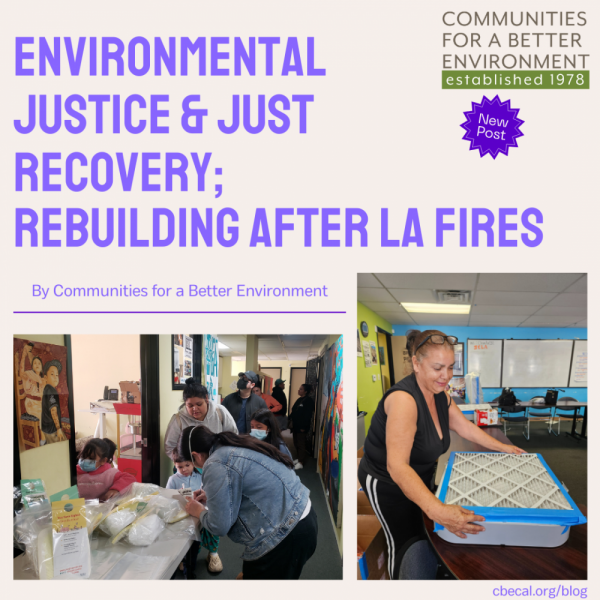
As we reflect on the last month, we have been processing the major fires that impacted Los Angeles County. This climate emergency led to us activating our rapid response efforts before being able to share our thoughts on the fire and its impacts. In consideration of community care, CBE prioritized supporting staff directly impacted by fires, distributed masks to community members impacted by worsened air quality and restructured financial and programmatic capacity to incorporate long-term recovery efforts. As we all continue to pick up the pieces of what’s transpired, CBE sends our love to the families directly impacted by the sweeping fires; and reaffirms our commitment to the Tongva (Gabrieleno), Fernandeño Tataviam, Chumash, environmental justice communities, and the Los Angeles Air basin that we will continue to advocate for a Just Recovery and a Just Transition.
CBE’s organizing and campaigns are community-led, by members who live with the impacts and outcomes of historical redlining, exclusionary zoning, racism, white supremacy, colonialism, and imperialism. Our campaigns address immediate needs and their root causes while advocating for transformative, creative, holistic, solutions to address the climate crisis. This includes emergency preparedness, something we no longer can ignore. Through our Climate Adaptation and Resiliency Enhancement (CARE) program, we have developed community-led solutions to respond to moments of climate crisis such as what occurred this past January. A previous survey of frontline community members helped us identify resources, such as masks and air filters, that would be helpful in a moment of crisis. These proactive measures were kicked into action the day after the fires started as we prepared to distribute masks to protect the lungs of community members in Southeast Los Angeles, Wilmington, and anyone else in the LA Basin who made their way to our offices.
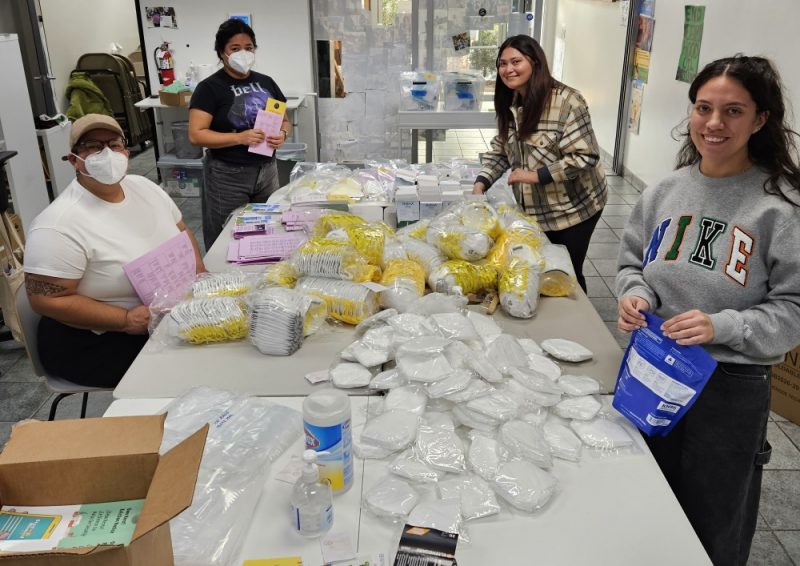
January 2025
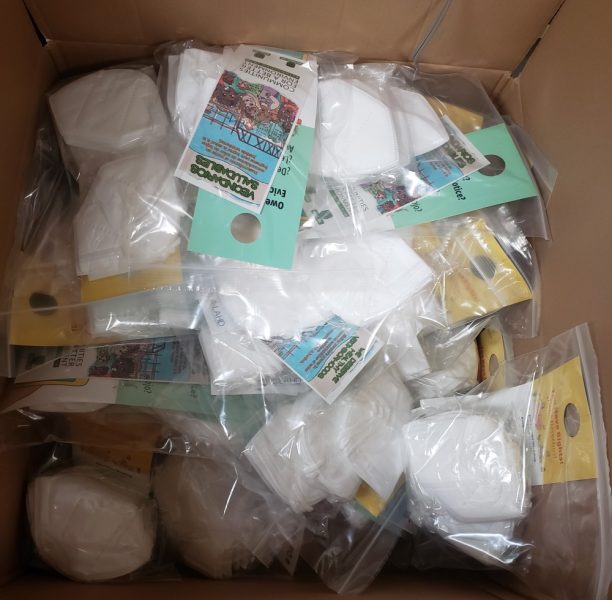
Mask kits included masks, eye drops, and other useful resources. January 2025
The fires that started on January 7th have further lifted the veil on climate change and how we are reaching the limits of how we can respond if we don’t change course. Although there are things we can do to prepare, it is almost impossible to put out fires when the winds gust up to 100 mph, or even at 50 mph, especially with multiple fires happening simultaneously. Ultimately, climate disasters like the Eaton and Palisades fires are getting worse. We must stop being in denial that climate change is happening, and we must immediately address some of the root causes of the crisis by phasing out fossil fuels that are causing the climate to heat up and change our weather patterns. With more dried plant matter acting as fuel for fires, extreme wind events are causing increasingly devastating wildfires that we can’t control.
We organize to build a Just Transition away from the current extractive economy which upholds environmental racism. An extractive economy includes the polluting fossil fuel industry, callous insurance companies, greedy corporations, price gouging landlords and land speculation. The Los Angeles fires have exacerbated the conditions of the extractive economy in real time:
- Exploitation of low-income and people of color- as seen by daily low wages (ranging approximately $5-$10 a day) and poor conditions of the thousands of imprisoned people fighting the Los Angeles fires. This is not a new practice; the CA wildfire force has comprised of up to 30% of incarcerated fire fighters. This past Fall (2024), we had a chance to change involuntary servitude (forced labor) in CA Justice Systems to relieve folx from this exploitative practice. Our voices matter and could change the trajectory of incarcerated firefighters.
- Extraction of health from environmental justice communities- the air quality for the Southern CA Basin in the past weeks has exceeded 190 AQI. Poor air quality and a legacy of limited access to health care exacerbates existing health conditions and threatens the livelihood of those living with disabilities, unhoused people, the elderly, and more.
- Extraction of wealth from communities of color through displacement- as we’re seeing discussions of rebuilding, we are also aware of greedy developers who are taking advantage of the fire disaster and are attempting to swoop in and buy property with low-offers through fear and intimidation. We’ve also seen landlords increase monthly rent in their available units, practicing price-gouging to take advantage of already vulnerable people who have houses that either burned down or are uninhabitable.
This could’ve been any neighborhood in Los Angeles. With winds reaching up to 100 MPH and embers flying far, this fire could have reached the Southeast LA Communities; had the fire originated in Rancho Palos Verdes, this fire could have reached Wilmington. Climate change impacts everyone, however, it does not impact everyone in the same manner. Some people may have a higher adaptive capacity while others- due to larger socioeconomic conditions- will have a more difficult time “bouncing back” after a climate disaster. Undeniably, that includes the displaced outdoor landscape workers and domestic workers unable to return to their places of work who are feeling the immediate burden of job loss and lower incomes.
Displacement and gentrification have been a threat to low-income and communities of color in the State and Los Angeles prior to the fires. The fires have only exacerbated the lack of equitable access to housing and narrow-minded vision of land development by local and state leaders. However, we will not allow the displacement of thousands of families from their homes. We know that this is not and will not be a one-time occurrence- the five largest fires have occurred in the past 7 years including the top three most destructive CA wildfires (Camp, Eaton, and Palisades)- we must be proactive and visionary. Climate data has proven that climate change is causing irrational weather patterns such as longer extreme heat events, stronger storms, limited snowpack, drought, and much more- therefore, we are grounded in the reality of climate impacts, and we are dedicated to a Just Recovery that prioritizes environmental justice communities.
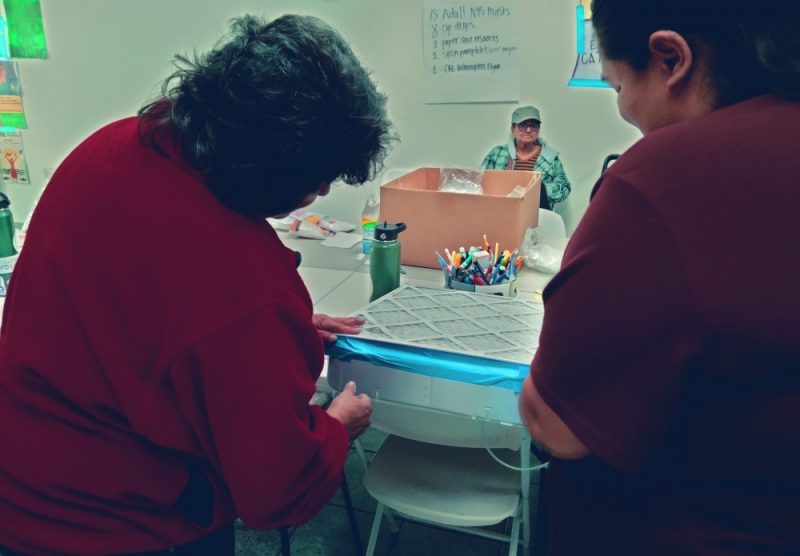
What does “Just Recovery” mean?
A Just Recovery resists disaster capitalism at every step- it is a recovery that is people-powered, heart-centered, and socially just to relief the long-term organizing and actions that reclaim the right of peoples to define their economies and govern their communities. The emergence of a “Just Recovery” came from women of color in the deep south who came together to mobilize support for impacted and vulnerable communities by participating in daily rapid response. An example of how this framework was executed includes the community’s response to Hurricane Harvey in 2017. Prior to the hurricane landing- organizers began communicating with each other to identify support and gather resources for those who would be most impacted. A month later the same framework was used in Puerto Rico due to Hurricane Maria. The path for most post-climate disasters which we have seen are 1) distribute aid exclusively through large national NGO’s or government adjacent entities such as the Red Cross and FEMA 2) extract cheap labor and land speculation from vulnerable communities and 3) long term community displacement and gentrification. In contrast, Just Recovery 1) responds to support communities through close coordination with mutual aid networks 2) recovers by providing resources and support to ensure all can return to their homes, 3) and rebuilds climate resilient communities so that they are stronger.
The immense response from the Los Angeles community has aligned with Just Recovery- immediately after the fires we began gathering masks for distribution, sharing existing mutual aid networks, directing capacity towards recovery hubs, and collectively processing the grief of this climate injustice.
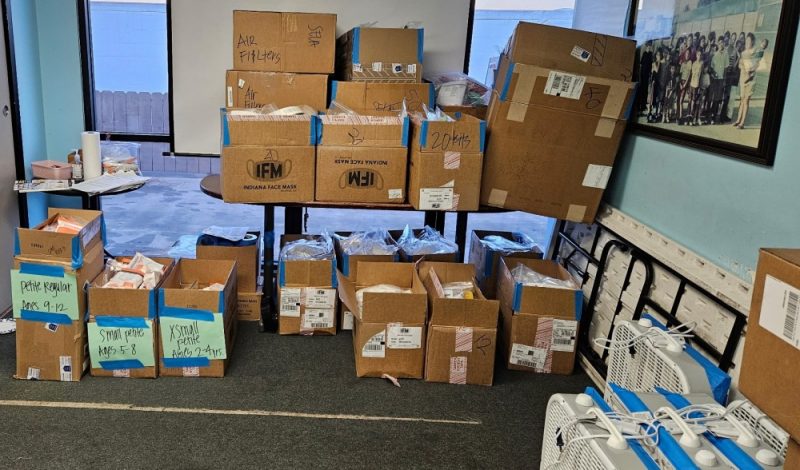
Completed mask distribution kits for community. January 2025 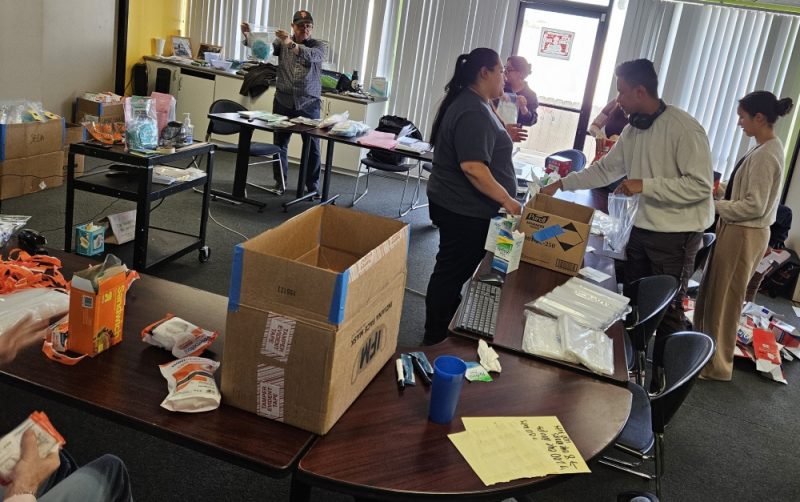
CBE SELA staff assembling mask kits for distribution. January 2025
Through our CARE program we have distributed nearly 11,000 adult Kn95 and N95 masks out of our Wilmington and Southeast Los Angeles offices. We also distributed nearly 400 children’s Kn95 masks, individual eye drops, DIY box fan air purifiers with MERV 13 air filters to about 400 families. Partners at SCOPE, Inner City Struggle, CHIRLA, CoCo and others in the We are CA space have streamlined their efforts to serve as collection sites and/or distribution sites to support the directly impacted families and secondary impacted households. A range of support has blossomed in this critical time to center collective care, health and safety.
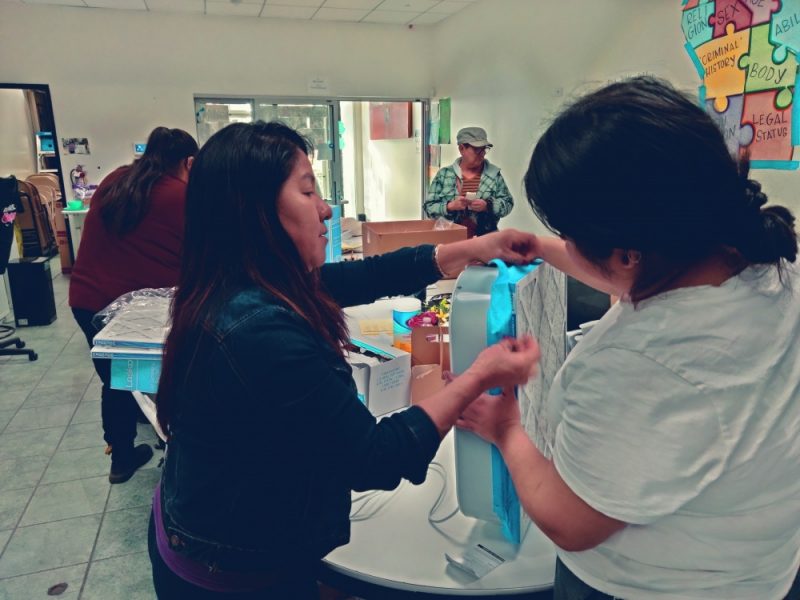
CBE staff helping a community member build a DIY Box Fan Air Filter.
January 2025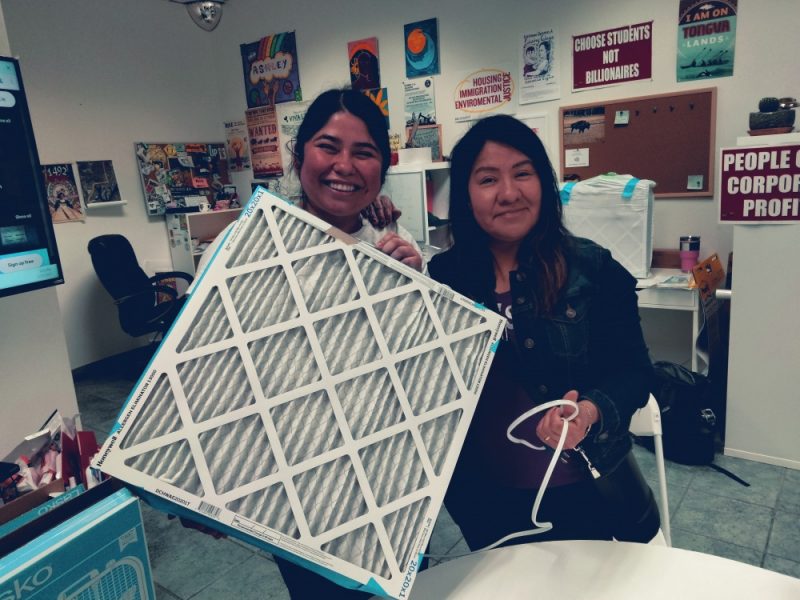
CBE staff and community member showcase their DIY Box Fan Air Filter.
January 2025
There is a long road to recovery, as our colleagues at Movement Generation have famously coined, “Transition is inevitable, but justice is not.” We call on local and state representatives to move forward in community-led, heart-centered, regenerative, and Indigenous led transformative solutions. We know that this is not a one-time disaster- due to the fossil fuel powered climate crisis- and that these disasters will continue to increase. Los Angeles has an opportunity to serve as a model for the state, region, and country if we utilize best practices that prioritize a Just Recovery and protect BIPOC and environmental justice communities.
In solidarity,
Communities for a Better Environment


